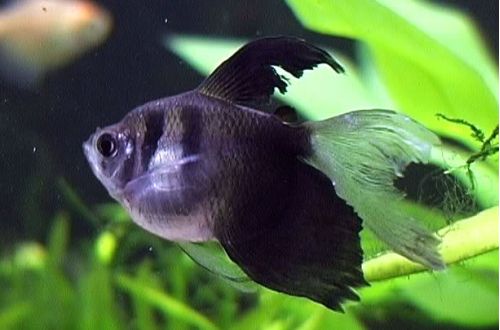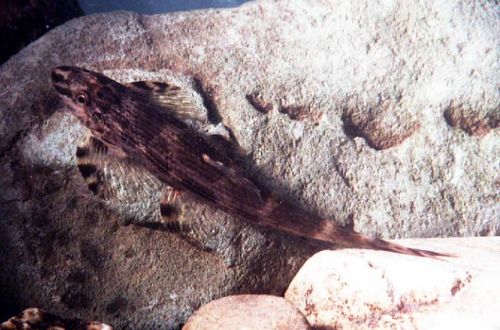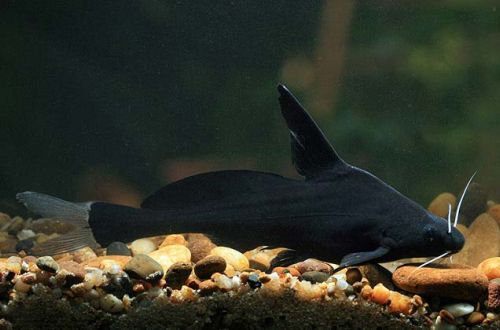
Black Tetra (Voil)
The long-finned black tetra, scientific name Gymnocorymbus ternetzi, belongs to the Characidae family. One of the morphological forms of the Black Tetra, differs from its predecessor in long spreading fins. Despite the artificial origin, the fish is quite hardy and can be recommended to beginner aquarists.

Habitat
It does not occur in nature, it was artificially bred on the basis of the Black Tetra, the first successful selection results were obtained in Europe. Currently, there are many varieties of this type, supplied to retail chains around the world.
Description
A high laterally flattened body, the fins are significantly enlarged in comparison with their predecessor, and can be comparable in length to the size of the fish itself. The coloration of the body and tail is silver, while the anal and dorsal fins are black, which gives the fish a dark hue in general. With age, the fins become gray. Two vertical stripes are clearly visible on the body, which are a distinctive feature of the species.
Food
With pleasure they accept all types of dry industrial and live food. The optimal diet consists of high quality flakes or granules fed 3 times a day.
Maintenance and care
Tetra’s modest dimensions allow the use of small tanks from 60 liters. Maintaining water quality at the proper level will allow an effective filtration system and replacement of part of the water (25-50%) every two weeks. Lighting should be subdued, use low power lamps. Other mandatory equipment consists of a heater and an aerator.
In decoration, favor low plants arranged in groups along the side walls of the aquarium to save space for swimming. The soil is sandy, various castles, sunken ships, chests, etc., as well as natural stained wood, roots, snags can serve as hiding places and shelters.
Social behavior
Mobile relatively peaceful species. Keeping a flock of at least 6 individuals. In this case, all their attention is concentrated within the group, with a smaller number they show aggression towards other species. Joint keeping is possible with fish of a similar or slightly larger size. Some species are notorious for their indifference to fish with long fins, Tetras can become their victims if kept in the same aquarium.
Breeding / breeding
The long-finned black Tetra is easily bred in home aquaria; the incentive to start spawning is the inclusion of meat products in the daily diet. Since fish do not show parental care for their offspring, a separate tank must be used.
A spawning aquarium usually has a volume of 30-40 liters. The recommended set of equipment includes: a lighting system, a simple airlift filter, a heater. In the design, the presence of low deciduous plants (possibly artificial) is mandatory, the soil is made of coarse gravel, the particles of which are about 1 cm in diameter.
When it becomes noticeable that one or more fish have swollen bellies, it means that spawning will begin soon. Females or a female are transplanted into a spawning aquarium, the next day a male is added. Until the eggs are laid, it is necessary to continue to intensively feed future parents with meat products, this may take about a week or less, depending on the gestation period.
The female lays eggs in one or more places, and the male fertilizes them, after which they are removed back to the common aquarium. The fry appear within a few days and soon begin to move freely around the aquarium. Feed with microfood, brine shrimp, while the light must be turned on around the clock, otherwise the fry will not be able to find food in the dark.
Diseases
The hardy species, however, is sensitive to a drop in temperature below the recommended one, in which case problems with the external integument begin, a fungus appears, and infection with protozoa occurs. Read more about symptoms and treatments in the Aquarium Fish Diseases section.





